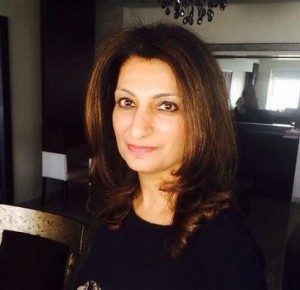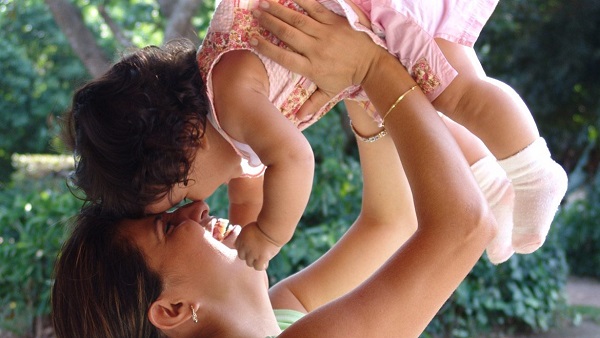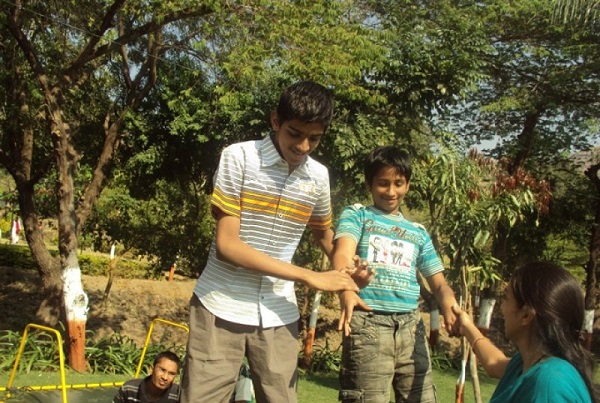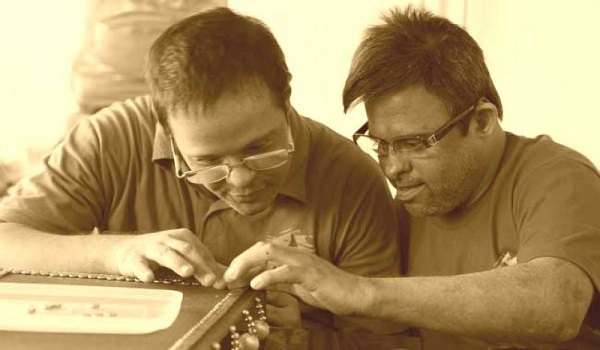Collaboration and respect – for autism spectrum children, parents and other professionals – will help in making a communications breakthrough.
 by Kamini Lakhani | saiconnections01@gmail.com
by Kamini Lakhani | saiconnections01@gmail.com
Part 11 of the Autism Diaries – success comes with teamwork and collaboration.
You may have watched the film, The Theory of Everything. It is based on the real life story of the eminent scientist, Stephen Hawking. Directed by James Marsh, the film has some truly wonderful performances, and fetched lead actor Eddie Redmayne an Oscar performance as well.
In his 20’s, Stephen Hawking was diagnosed with ALS (which is widely known after the Ice Bucket Challenge). People with ALS are known to not live very long as their entire motor neuron system gets impacted. It is extremely painful to watch the progression of this disease. But Stephen Hawking, as you all know, has beaten all odds to survive. Not only survive, but he continues to come up with brilliant scientific theories that are mind boggling.
The triumph of emergence and victory stayed with me long after I watched the movie. The beauty and strength of the human spirit continues to baffle me and touch me in a deep way.
Having worked with people on the Autism Spectrum for the past two decades, I was also struck by the communication device that is used by Stephen Hawking. There is this beautiful scene in the film where his wife tries to get him to use a communication board, where he needs to spell out words by glancing at letters. The pain that such an intelligent and highly advanced mind goes through to function through such an elementary level was heart wrenching. I couldn’t help but think that many of my own students may be going through exactly the same thing. Having a mind and body not in sync, must be the most frustrating thing in the world.
Later on, a highly specialized augmentative communication device, a sophisticated computer with voice output is used by Hawking.
As I watched this movie, I thought about my students on the Autism Spectrum who are non-vocal. Surely there must be communication devices that could help them too. But how should I go about this? Augmentative Communication Devices are not something that I know much about.
The idea would be to get a specialist or expert in the field of Augmentative Communication to help us with this. This is why I requested Bala Sriram to help us out – as this is her area of expertise. Bala has 40 years of experience behind her and is very well known for her good work. Here are some sound bytes from Bala about collaboration.
“While Collaboration and Consultation are often used interchangeably, they are quite different.
With Consultation, it is an ‘expert’ model. One professional is sharing their expertise with some other professional who is working with the student.
With collaboration, all professionals involved are equal contributors and are recognised for their individual expertise and what they have to offer to the team.
In professional collaboration, there must be shared responsibility and shared decision-making among general education teachers, special education teachers, and related service professionals.
Have the Speech Language Pathologist and or the Occupational Therapist work in the classroom with the teachers and with the parents in a home school setting.
In conclusion, a collaborative TEAM effort is the key to success.”
And this is exactly what a family and I were discussing recently. Basically, I guide the parents about restoring the guide apprenticeship feedback loop which is disrupted. As a result of this, the parent child relationship is getting normalised. We are also seeing the child improve in terms of problem-solving and development of dynamic intelligence. We have seen a surge in language, but to maintain that momentum and also to improve articulation, we would need input from a Speech Language Pathologist. The family is working with an experienced Occupational Therapist, as the child has many sensory needs as well.
As we all know, one size does not fit all. Each child on the Spectrum has unique needs. These unique needs are based on varying co-occurring conditions that exist along with the core deficits of autism. This particular child has speech and sensory needs. Another child may not necessarily have sensory needs, but may have anxiety issues along with speech issues. Yet another child may have severe aggression, behaviour issues, learning issues, epilepsy, vision problems etc.
Customisation of a programme, to the needs of a family, requires a collaborative effort.
The basis of this collaborative effort should be respect. Sometimes I feel that respect is a highly over used word and done to death! However, at the cost of being repetitive, I would like to share my thoughts.
1. Respect for the child.
We all say we respect the children that we work with. But do we continue to speak about them in front of them? People on the Spectrum who are non vocal may not ‘speak’- but that doesn’t mean that they don’t understand. This applies to parents speaking about their kids in front of them too!
2. Respect for the parents.
I have a dual role – that of a parent and a professional. We as parents go through our own agony and stress. And we as professionals should support parents to be team members. The input that parents can provide is quite invaluable. They are also the agents who ensure that generalisation happens. Are we giving credence to their opinions? Are we nurturing them enough?
3. Respect for other professionals.
Every professional who is part of the team, has their own area of expertise. I don’t think anyone else can judge another’s field of expertise. What I find difficult to get over is how a professional from one area of specialty can run down somebody from a different specialty, and that too without understanding the other’s area of specialisation fully.
I must say that we have a wonderful group known as the ‘China Gate’ group which consists of about 80 professionals having diverse specialties. This group is moderated by the dynamic Mrs. Sriram. The aim is to have a cohesive group that can learn from each other. It is a fantastic initiative. Other such laudable initiatives include the Monitoring and Resource Committees set up by Forum For Autism.
Here are some wise words by a parent of a teenager on the Autism Spectrum. “I have always believed in team work, as long as the professionals involved are not working at cross purposes. It’s important to gain from different perspectives. I also believe totally in parent involvement in this entire process.”
Are we as professionals willing to get out of our comfort zones to support each other?
Are we as parents willing to get out of the shadows of intimidation and let our lights shine?
What is your take on this? Feel free to share your thoughts with me at saiconnections01@gmail.com.
Kamini Lakhani is the founder of SAI Connections. She is a Behaviour Analyst, an RDI (Relationship Development Intervention) Consultant, Supervisor and Trainer responsible for RDI professional training in India and the Middle East. She is the mother of an adult on the Autism Spectrum. She is also a member of Forum for Autism.
(Picture courtesy www.thehindu.com)






2 Comments